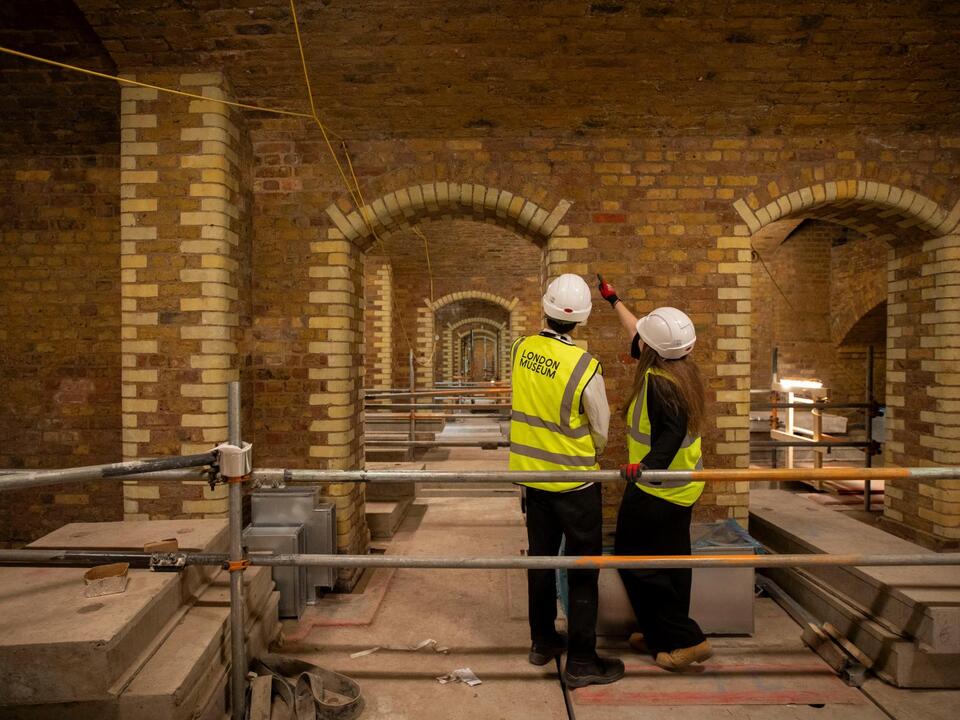Physical Address
304 North Cardinal St.
Dorchester Center, MA 02124
Physical Address
304 North Cardinal St.
Dorchester Center, MA 02124

A contractor working on the new London Museum site at Smithfield market made an astonishing discovery when he knocked a hole in a bricked-up basement wall. Initially, he only saw a muddy pile of rubble and some scurrying rats. However, this unassuming beginning led to an extraordinary find.
Once the debris was cleared, architects and builders unveiled a vast, beautifully constructed network of subterranean brick vaults. For over a year, no one had any clue that these structures even existed.
Paul Williams, the principal director of the lead architects, Stanton Williams, said there were hints of underground structures on old plans. Still, everything was blocked in and bricked up, so no one knew they were still there.
The sheer scale of the surviving Victorian vaults, spanning an area larger than three tennis courts, was breathtaking. Hidden in one of the busiest parts of central London, these labyrinthine vaults featured hand-built arches and columns.
Williams described the moment of discovery as “a little bit Indiana Jones” and “magical.” The experience captivated him, thanks to the project’s goal of converting two historic former food markets in Smithfield into the new home for the former Museum of London.
Scheduled to open in 2026, part of the new museum will sit underground, aligned with former Roman streets, Crossrail trains, and the hidden River Fleet. Visitors will even get to see passing trains through a window.
Williams emphasized that the entire project is about igniting the imagination. Trains, Romans, and hard-to-find vaults all contribute to this enchanting vision, perfect for the London Museum.
The museum’s senior curator of archaeology, Francis Grew, has had time to research the vaults’ history and purpose. Built along with the general market in the 1880s, they served to support the busy Farringdon Road while also providing storage space for market goods.
However, the vaults harbored a mystery. Grew pointed out that their exact intended use remains unclear, adding an element of excitement. They likely stored fruit, vegetables, meat, and textiles, and might even have been used as stables for packhorses working at the markets.
The vaults’ meticulous construction goes beyond functionality. Williams highlighted the use of rounded, lighter-colored bricks on every column edge, likely designed to help porters navigate the maze in poor light. He compared the craftsmanship to cathedral-level building.
The discovery, while delightful, initially posed a significant challenge. The vaults were not part of the original renovation plan and didn’t fit into any budget.
Joe Kenway, leading the project management, described the initial shock and the subsequent scramble to incorporate the vaults into the museum’s plans. The architects eventually secured additional funding from the City of London Corporation to adapt the project.
Now, five years after that first breakthrough, the vaults’ expansive brickwork has been meticulously restored. Floors and lighting are soon to be added, allowing future museum visitors to explore the space. Initially, the vaults will not house the permanent collection but will host pop-up events like immersive theatre and large-scale dinners.
Kenway believes the museum deserves to become one of London’s special places. Many involved in the project have family ties to the Smithfield area, and making this space accessible will offer both local and international visitors a unique glimpse into this historic part of the city.
Source: The Guardian



